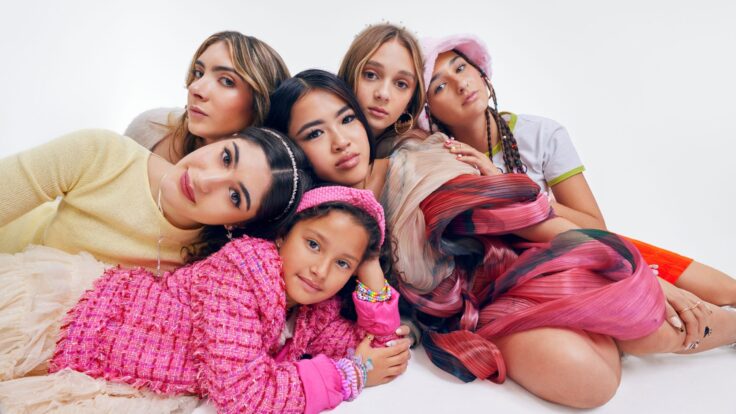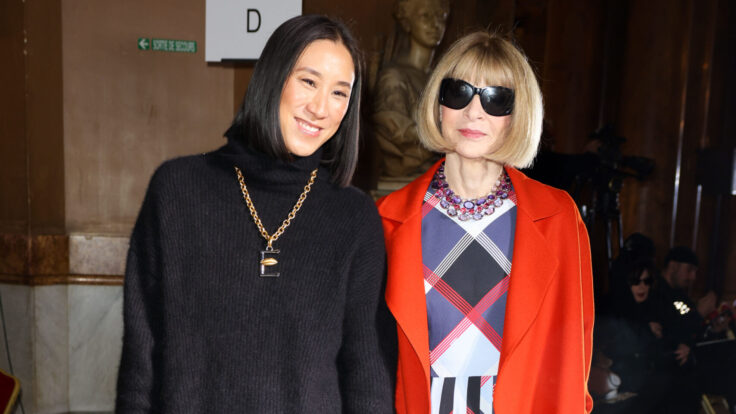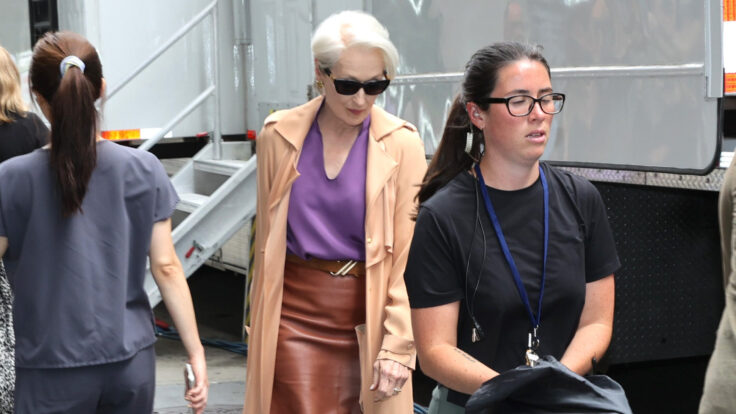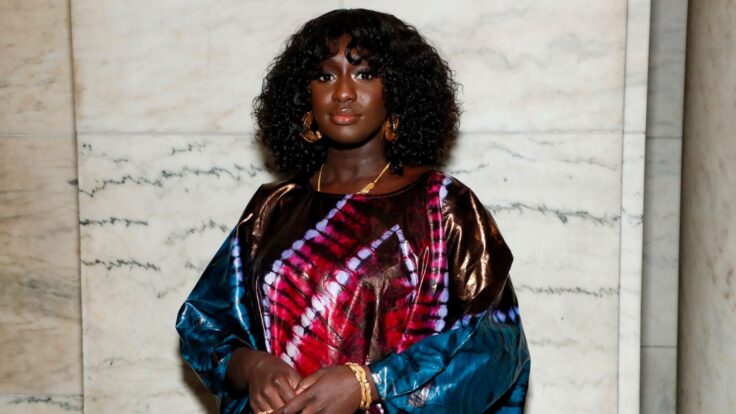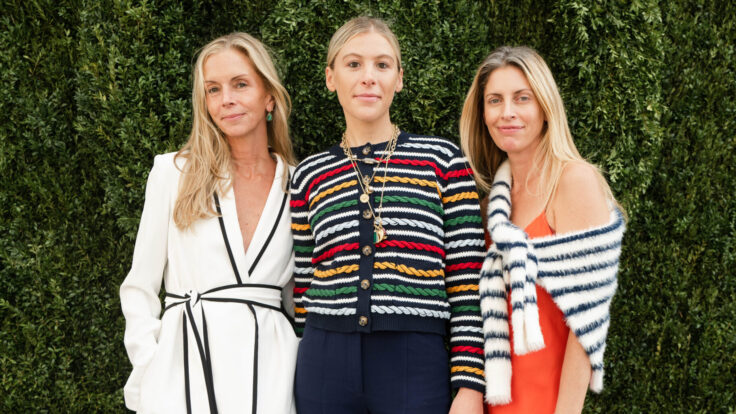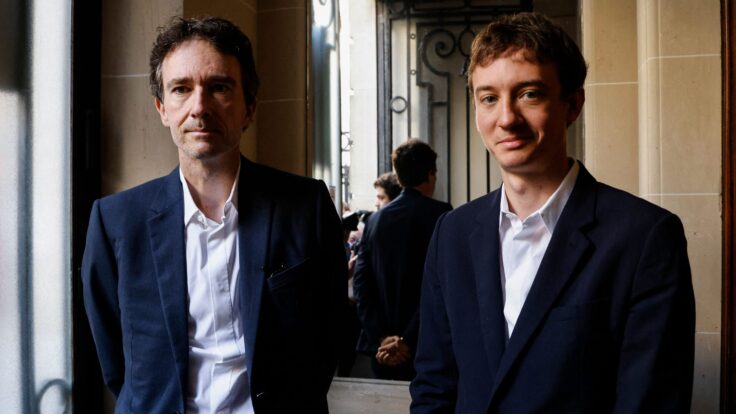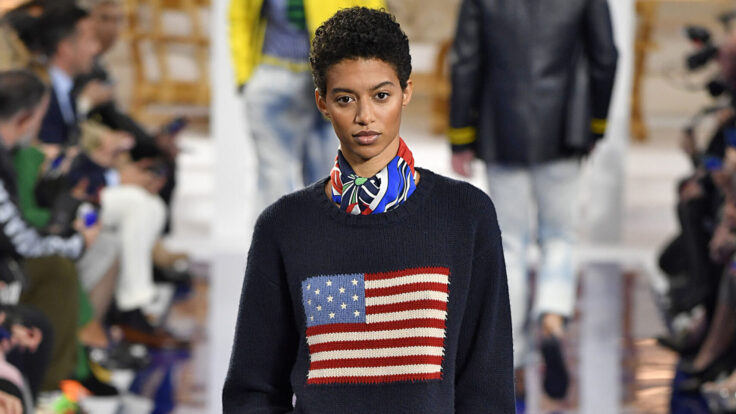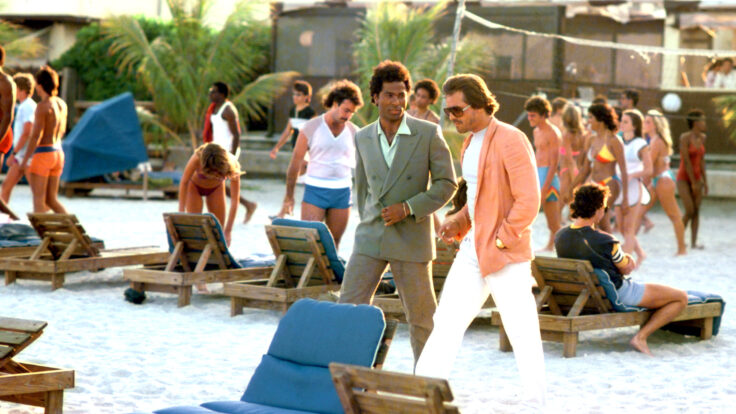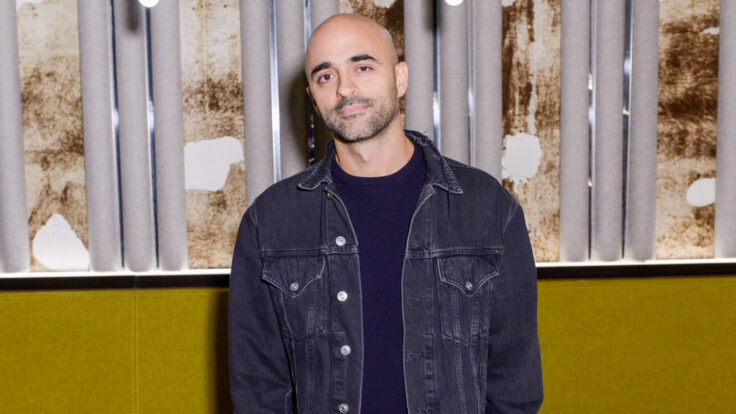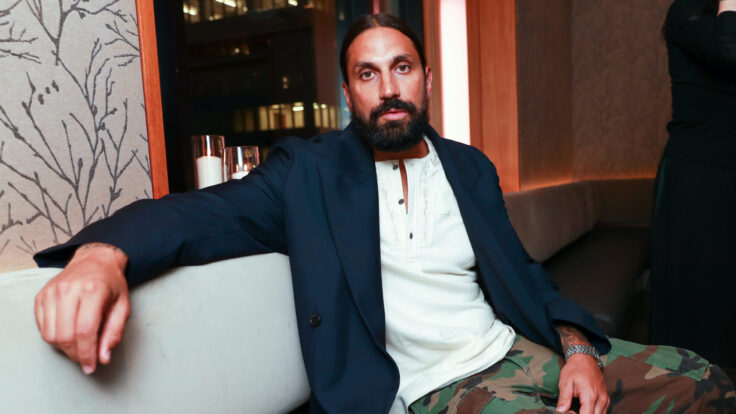Greetings! As you can probably tell, today’s newsletter looks a little different.
After three years, we’ve redesigned the look and feel of our private emails, and want to know what you think. If you have any feedback, please click here to take a brief survey.
|
Hi, and welcome to Line Sheet, coming at you from the great city
(?) of Los Angeles, where it’s cold enough to wear a coat.
Today, I’m looking at the past, present, and future of Calvin Klein. There’s also news from London about the future of British Vogue, and Sarah “ SShsapiro@puck.news” Shapiro is here with thoughts on what’s going down at Nordstrom. Plus, by popular demand, I address the Maryam Nassirzadeh profile that recently ran in The Cut.
🚨🚨 Programming note: Today on Fashion People, I’m joined by Harper’s Bazaar executive editor and cohost of The Good Buy Leah Chernikoff. We’re talking Carolyn Bessette-Kennedy fashion at Sotheby’s, Calvin Klein’s runway return, and what it’s been like to cover the world of designer musical chairs for 15 years. Listen here and here.
🎁 Before we get started: Here’s a friendly reminder that Puck is not free. Don’t be a Grinch (the green kind or the Roger Lynch
kind) and sign up now.
Mentioned in this issue: Calvin Klein, Veronica Leoni, British Vogue, Ib Kamara, Condé Nast, Blake Lively, Maryam Nassirzadeh, the Nordstroms, Mickey Drexler, Jeremy Allen White, Greta Lee, Raf Simons, Pieter Mulier, Matthieu Blazy, Helmut Lang, Ralph Lauren, Michael Kors, The Row, Céline, Francisco Costa, Eva Serrano, Jil Sander, Italo Zucchelli, and many, many more…
|
Three Things You Should Know…
|
- Maybe this heads-of-content thing wasn’t exactly the best idea: The speculation in London is that stylist Ib Kamara, editor-in-chief of Dazed & Confused and creative director of Off-White, may be headed to British Vogue in a yet-to-be revealed capacity. Some folks were saying that he is replacing current British Vogue boss (and Anna Wintour soldier) Chioma Nnadi; others have suggested that he may be coming in as a creative director. However, a source close to the situation said that Nnadi isn’t going anywhere, and that her position with Wintour has never been more solid. (Her profile has been raised in recent months, and I hear she will get more recognition in the new year.)
My understanding is that the latter scenario—where Nnadi brings on Kamara in a creative director-type role—is not out of the question, but that nothing has been signed just yet. (I can provide any number of data points to demonstrate that Wintour values deep fealty over talent and experience in these roles, and that she prefers to work with people whom she likes and has some history—the blessing and curse of the dowager stage of her rule.) A rep for Vogue did not respond to a request for comment.
The structure would be similar to what’s been transpiring at Vogue Paris, where interim boss Claire Thomson-Jonville and stylist Alastair McKimm have partnered on a couple of issues. No word on whether Thomson-Jonville is officially replacing Eugénie Trochu; from what I know, nothing is signed there, either. A sticking point with a lot of these creatives is that they can’t run their valuable consultancy or advisory shingles once they are executives of the company. Unfortunately, the exclusivity requirement shrinks the pool of candidates these days, a reflection of the shrinkage of the roles, themselves. People like Thomson-Jonville do a lot of consulting—that’s how they make money—and they are arguably too big for any one brand.
Complications aside, it’s sensible that Condé would want to iterate on the head-of-content model, where one global editor-in-chief establishes the vision, and worker bees in each region execute on it. While the setup ostensibly makes sense, the reality is that local advertisers want different things, especially visually, and images are the most important component of glossy magazines, both for creative and commercial reasons. So it makes sense to pair the person who gets stuff done with the person who has big ideas, just like you would at any other company. And, yes, that is the moral of the story: By necessity, Condé Nast long ago became like any other company.
- About that Maryam Nassirzadeh profile in The Cut: Funnily enough, I got tipped off about this piece weeks before it was published. First, by someone who is friends with the author, Madeline Leung Coleman; second, by someone who was interviewed by Coleman and was uncomfortable with her line of questioning, which focused on the health of the MNZ business.
In the end, the piece is hardly a takedown (just a couple of requisite bitchy lines), but it does lead with—and is overly preoccupied by—the idea that Nassirzadeh’s business is a mess. Stories like these drive me nuts. (Yes, even my beloved Robin Givhan’s version, where she eviscerated Pasadena’s finest, Rodarte.) Newsflash: Every designer business is sort of a mess, especially the little ones. In the Nassirzadeh profile, the writer reports that people have been whispering, “How does she stay in business?” Oh, have they? Who?
Let me explain how designers like this stay in business. They go into debt or take on (often preferred-in-kind) investments, like virtually every other business in the world. So yes, they hustle, and often in unpleasant ways: They take money from rich people, do consulting jobs, exercise lines of credit, and default on their bills. The fashion business is low margin in the best of times, often run by creatives who are overwhelmed by these burdens of profitability. (Public and large-cap private companies deal with many similar issues…) The unique thing about Nassirzadeh is her actual design talent, not her poor business acumen.
This piece only begins to touch upon her proclivities and her
strangeness, which are worthy of both dissection and criticism. I wish the writer had dug further into Nassirzadeh’s background, and why her approach to fashion—a wild mix of sophistication, nostalgia, sexiness, and a bit of ugliness—is so potent for a subset of consumers right now. If that Carven job that Louise Trotter just vacated is still open, I hope they consider Nassirzadeh. She’d be great, and would also… make some money.
|
|
|
|
A MESSAGE FROM OUR SPONSOR
|
Family gatherings are fun, but New Year’s Eve is where it’s at. (Just ask Harry Burns and Sally Albright.) Scoop
up a glam sesh for the glitziest night of the year. Book now.
|
|
|
 |
Sarah Shapiro |
|
- On the Nordstrom take-private: Erik, Pete, and Jamie Nordstrom finally got the holiday present they’ve been after for years, and at a steep discount. In 2018, the family offered $50 a share to take Nordstrom private. The board rejected the bid as too low. Fast-forward to 2024—after the launch of a New York store and a volume-driving, arguably value-diluting online marketplace—and the current offer to take Nordstrom private, which was approved by the board, is now… $24.25 a share. That’s a loss of $4.3 billion for shareholders, and a Christmas metaphor illustrating how much value has been lost in both the sector and company, itself, during the past few years.
So, what happens now? Most importantly, the Nordstroms will be able to make decisions without the prying eyes of the public market. They’ll have investors to answer to—El Puerto de Liverpool will own 49.9 percent of the shares—but the expectations won’t be based on quarterly reports. And this allows them to make some gruesome but overdue strategic shifts at a more drastic cadence.
To start, I suspect they’ll close stores, invest in improving select locations, and make other brand-preserving decisions that will all initially cut into profits. Maybe they’ll pull back on their marketplace, too. It’s certainly a volume driver—with more than 300 vendors participating—but it isn’t necessarily good for the overall brand. When I sold my own, since-closed brand (a story for another day) through the marketplace, sales were strong and consistent, but the return process and chargebacks were so terrible that they defeated the whole purpose. Going private won’t guarantee Nordstrom’s future—all department stores are in a precarious position—but it will give the family a lot more control and accountability, both of which have been in short supply.
|
|
|
|
And now, a Calvin Klein stocking stuffer…
|
|
|
|
The latest revival of Calvin Klein may represent a reversal back toward high fashion and relevance, but it’s also probably a last-ditch effort for PVH executives to determine whether it has any influence left beyond its advertising.
|
|
|
|
Last week, Calvin Klein announced that its new Italian designer,
Veronica Leoni, would show her first collection during New York Fashion Week, in February. Even as recently as a year ago, it was universally accepted that Calvin Klein was no longer a Fashion Week brand. The company, which last sent models down the runway in 2018, had long since coalesced its business around underwear and denim, the forever profit center buoyed by decades of occasionally provocative, consistently attention-grabbing marketing. The beauty of boxer briefs is that you don’t need the runway—you only need Jeremy Allen White and Greta Lee, albeit standing on the metaphorical shoulders of Mark Wahlberg and Kate Moss. And yet, here we are, anxiously awaiting yet another ready-to-wear debut from one of Europe’s rising stars.
It’s a time warp, of sorts, back to the Raf Simons–Pieter Mulier–Matthieu Blazy era at Calvin, when three honest-to-god designers renamed the ready-to-wear collection Calvin Klein 205W39NYC, in honor of the company’s Garment District office. From August 2016 to December 2018, they injected the world of Seventh Avenue garmentos with real, unadulterated fashion, proposing a European vision of postapocalyptic Americana that owed more, in some ways, to Helmut Lang than Calvin himself and instantly became a staple on other designers’ vision boards. Sure, it was a colder, less sweaty version of Calvin Klein, but I loved Simons’ psycho cowboys, murderous cheerleaders, and hazmat suits.
|
|
|
|
A MESSAGE FROM OUR SPONSOR
|
Family gatherings are fun, but New Year’s Eve is where it’s at. (Just ask Harry Burns and Sally Albright.) Scoop
up a glam sesh for the glitziest night of the year. Book now.
|
|
|
|
The clothes were covetable, but the strategy was flawed. The
Simons-Mulier-Blazy appointment was intended to make Calvin Klein competitive with Gucci and Balenciaga et al.—a tall order and false proposition. Calvin Klein is not, and never was, a luxury brand. Like Donna Karan, Michael Kors, Ralph Lauren, and other companies born in the post-couture era, Calvin Klein derived its profits from low-margin volume items rather than expensive handbags. In the end, the dream team was stymied because the manufacturing capabilities simply weren’t there, even with increased distribution. The odd fit of the jeans, the cornerstone of the collection, was a telltale sign that this wasn’t going to work.
Anyway, after Simons and his team split, the company announced that they were very much done with the high-end designer thing, and that their hope was to bring in a rotating roster of collaborators, Moncler-style—then just the latest indication of the waning significance of
American runway fashion.
|
|
Now, Calvin Klein appears to be pivoting again under the leadership Stefan Larsson, who joined parentco/owner PVH in 2019 and replaced longtime C.E.O. Manny Chirico two years later. Larsson, a 50-year-old Swede, made his name at H&M at the height of the fast-fashion revolution before moving to San Francisco, where he had a successful run at Old Navy. In 2015, he was named C.E.O. of Ralph Lauren, where he was tasked with enacting a turnaround, but left after two years because of disagreements with the namesake over how to move ahead. (His strategy was famously called the Way Forward Plan, but Ralph evidently didn’t like how forward it was.)
Larsson may communicate in contemporary C.E.O. speak—when he got fired from Ralph Lauren, he went on a “learning journey,” meeting with industry insiders the world over—but he has ambitions to inspire the consumer, more in the style of the old-school European executives and the Mickey Drexler variety merchants, who believe creativity fuels commerce. (In fact, before Larsson got the PVH job, he interviewed to be Drexler’s successor at J.Crew.)
Larsson has spent the past few years addressing PVH’s most obvious problems—making the businesses less reliant on Macy’s by turning up direct-to-consumer sales and finding other modes of distribution, etcetera. More broadly, however, Larsson’s aim is to transform PVH from a private equity-style holdco, in the vein of VF Corp., into a strategic organization that houses and nurtures brands. (I wouldn’t be surprised to see PVH eventually acquire Michael Kors.)
Larsson would never compare PVH to Kering or LVMH, but he does want to operate and nurture good brands rather than extract as much value as possible from their heritage. For the transformation of Calvin, he first hired Eva Serrano, a Zara alumna with plenty of fast-fashion experience, as global president. After getting the marketing back on track, the two decided that they needed a real designer to tack on that unreal, inspirational layer.
There was some hope in the industry that Larsson and Serrano would hire an American designer to revive ready-to-wear. But Calvin is the most intimidating American brand. Essentialist fashion is already extremely hard to get right: Besides The Row and Uniqlo, which have it figured out, everything else feels too expensive, or too cheap, or not interesting enough, or too interesting. When the pure thing has already been perfected—as it was by Calvin, Jil Sander, and Helmut Lang in the ’90s—why mess with it? Anyway, they went with an Italian.
|
|
|
|
In some ways, Leoni was an obvious choice. She’s worked at Jil
Sander, Phoebe Philo’s Céline, and The Row, all brands that share a minimalist sensibility with Calvin Klein. She was also a hot property in Europe, up for different jobs and generally viewed as a talent to acquire. (Her own brand, Quira, was a finalist for the LVMH Prize in 2023.) If her work at Calvin Klein is good, she will firmly become an industry star. In the meantime, it will be interesting to see how she fares working with her team in Rome when everyone else is a world away on 39th Street.
I don’t think Larsson and Serrano expect ready-to-wear to give a direct boost to the Calvin Klein business anytime soon; Serrano is being brought on to provide an old-school halo effect, harking back to the time when Francisco Costa and Italo Zucchelli were designing women’s and men’s, respectively. (Both designers are now getting their flowers for what was often seen as a thankless task—especially Zucchelli, whose work has been hugely influential in the menswear world.)
In the end, though, PVH isn’t going to waste any money foolishly. And the pivotal question isn’t really whether Leoni’s debut show in February is a success or not. Instead, Larsson and Serrano will have to decide whether Calvin Klein is still capable of being the first word in anything. As Calvin Klein, himself, admitted a few years back, he buys his jeans at Uniqlo.
|
What I’m Reading… and Listening To… and Watching…
|
I spent a good amount of Sunday night reading through Blake
Lively’s complaint against It Ends With Us “director” Justin Baldoni and Jamey Heath, his business partner. It can be hard to root for Lively; she can come off as an arrogant, poorly dressed jerk with a powerful husband. The worst part is that she thinks she’s as funny as he is, and he’s not even that funny. Also, never forget Preserve. And yet, there’s no denying that the complaint paints Baldoni and his team as utter creeps and connivers who will likely never work again.
As this pertains to Line Sheet: Lively also claims that the negative press, allegedly driven by Baldoni’s team, “depressed retail sales” of her haircare line by “56-79 percent,” and that the “dramatic drop was completely at odds with the high satisfaction scores that Blake Brown products received in the significant consumer testing performed before launch or its initial success after launch.” She also claims she spent seven years developing the product. (Really?) As Rachel noted in late September when she broke the news about the dramatic drop—it was worse at Target, according to her reporting—the downswing actually happened after the Blakelash, and after Lively took a break from social media.
In reality, a dip for a big launch like this is normal no matter what, but perhaps— perhaps—it was exacerbated by the smear campaign. In the end, Lively’s line will bounce back if the product is good. [ NYTimes]
This essay and book, both about artist mothers married to artist fathers, are easily read in tandem. [ Irina Aleksander on Eleanor Coppola and Sarah Hoover’s The Motherload]
R.I.P. Big Lots. [ Axios]
Everyone I know who has worked with photo editor Jody Quon is obsessed with her. I learned so much from this conversation, I am now also obsessed with her. [ A Great Podcast]
I watched The Heartbreak Kid this weekend for the first time and loved it. Directed by Elaine May and starring Charles Grodin, Cybill Shepherd, and Jeannie Berlin (Cyd Peach from Succession), it’s caught up in some weird rights situation so you can only watch it via the link provided. The fashion is also good—( Peter Bogdanovich era) Cybill in a football jersey! Minnesota college campus coats! Do it over the break, you won’t regret it. [ YouTube]
|
|
And finally… Here’s your annual reminder that DHL, UPS, and USPS are superior to FedEx on any given day. FedEx, I am home! Why don’t you try knocking?
Merry Christmas, Happy Hanukkah, and see you Thursday,
Lauren
|
|
|
|
Puck correspondent Lauren Sherman and a rotating cast of industry insiders take you deep inside what fashion people are really talking about behind the scenes of this multi-trillion-dollar biz, from creative director switcheroos to M&A drama, D.T.C. downfalls, and magazine mishaps.
|
|
|
|
A biweekly private email offering unparalleled access to the global art market: the mega-auctions and galleries, elite buyers and sellers, and the power players who run this opaque world.
|
|
|
Need help? Review our FAQ page or contact us for assistance. For brand partnerships, email ads@puck.news.
You received this email because you signed up to receive emails from Puck, or as part of your Puck account associated with . To stop receiving this newsletter and/or manage all your email preferences, click here.
|
|
Puck is published by Heat Media LLC. 107 Greenwich St, New York, NY 10006
|
|
|
|

